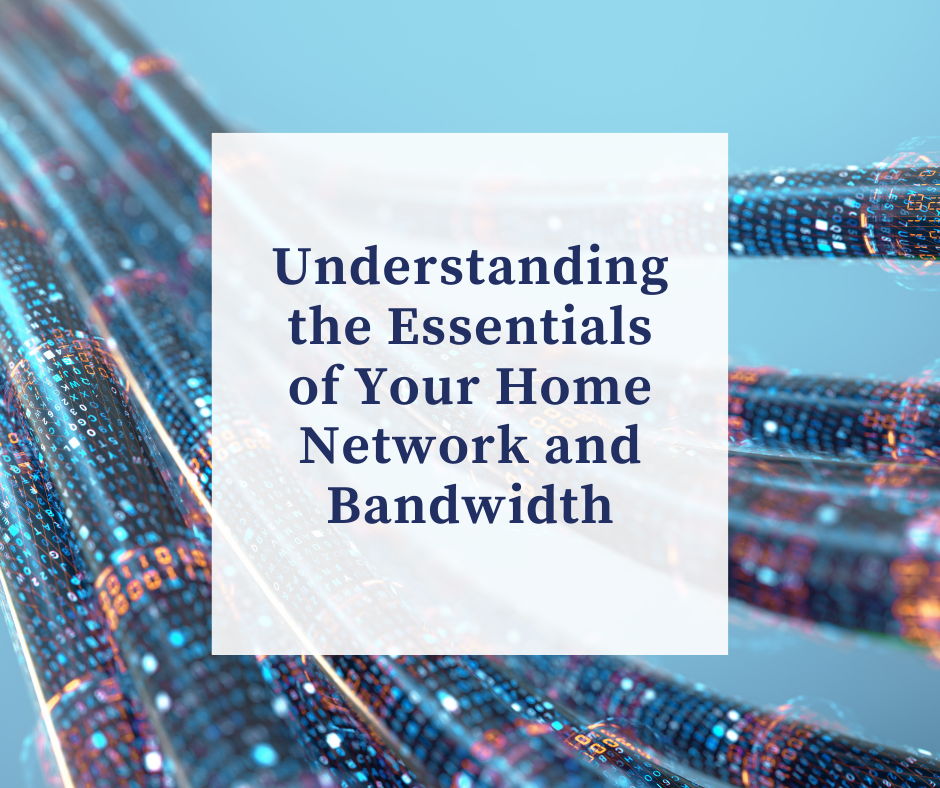
In our last article, we covered must-have tech for working from home (read it here). In this article, we’re going to get into the lifeblood of working from home (remotely), and that is your Internet Service Provider (ISP). Not all ISP’s are equal.
The best ISP for working from home truly depends on the needs of the user and household. Location may also play a role, impacting which ISP’s are available to you. The push to work and learn from home has stressed the networks, and it is important to understand some essentials when setting up your home network.
In this article, we are going to cover some basics of ISP’s for working from home.
How much speed do you need?
Different uses for the internet have varying demands of the internet, meaning that the various tasks you perform during your workday demand different internet speeds and bandwidth. You will also want to consider the other people in your household; do you have students learning from home, or a spouse also working from home? Multiple users will impact the demand on your home ISP.
Speed Needs:
- Basic web browsing and email requires 2-5Mbps
- Video conferencing requires at least 10Mbps
- You will also want to be aware of your upload speed as video conferencing requires both upload and download bandwidth
- Transferring large files will require 35Mbps+
What is bandwidth?
We recently heard an analogy for bandwidth that we liked, involving drinking different beverages through a straw, and it goes something like this:
Drinking water through a straw is easy, with little resistance. Drinking a milkshake through a straw may prove a challenge. A milkshake is thick, putting more stress and demand on the straw.
Now think of the different tasks you’re performing on your home internet. Sending a simple text email is akin to drinking water through a straw, it is a small amount of data that does not take up much bandwidth. As many of us are finding out, in the remote work atmosphere, we’re using video more often than not. Video requires more data and bandwidth than a text email. Video conferencing requires both download and upload bandwidth. Higher resolution requires more data and therefore, more bandwidth.
Bonus Tip: Just because you are paying for 1Gbps does not mean you are receiving those speeds. Most ISP’s do not guarantee their speeds
The Covid pandemic changed the game for many, if not all of us. Much of the workforce suddenly found themselves working from home, college students found themselves needing to move back home, while high school and elementary students found themselves learning remotely from home. Kids using Zoom (or other software) to learn while parents are in video meetings while working remotely stressed the best of networks. Understanding bandwidth truly comes in handy.
Bonus tip: when using video, if you are experiencing buffering and performance issues, try to lower the resolution of the video to help mitigate the bandwidth demand.
Upload Speed
Before covid, you rarely (if ever) heard of an ISP’s upload speed that they offer to their customers. Upload speed was not as necessary before all of the video conferencing and increased demand from working from home and remote learning. Now that upload speed has increased in importance, ISP’s are sharing (and improving where needed) their upload speed.
Bonus Tip: Know what devices and apps are using up bandwidth. If they are not needed, close the app, turn off the device, or put your mobile in airplane mode to free up some much-needed bandwidth.


